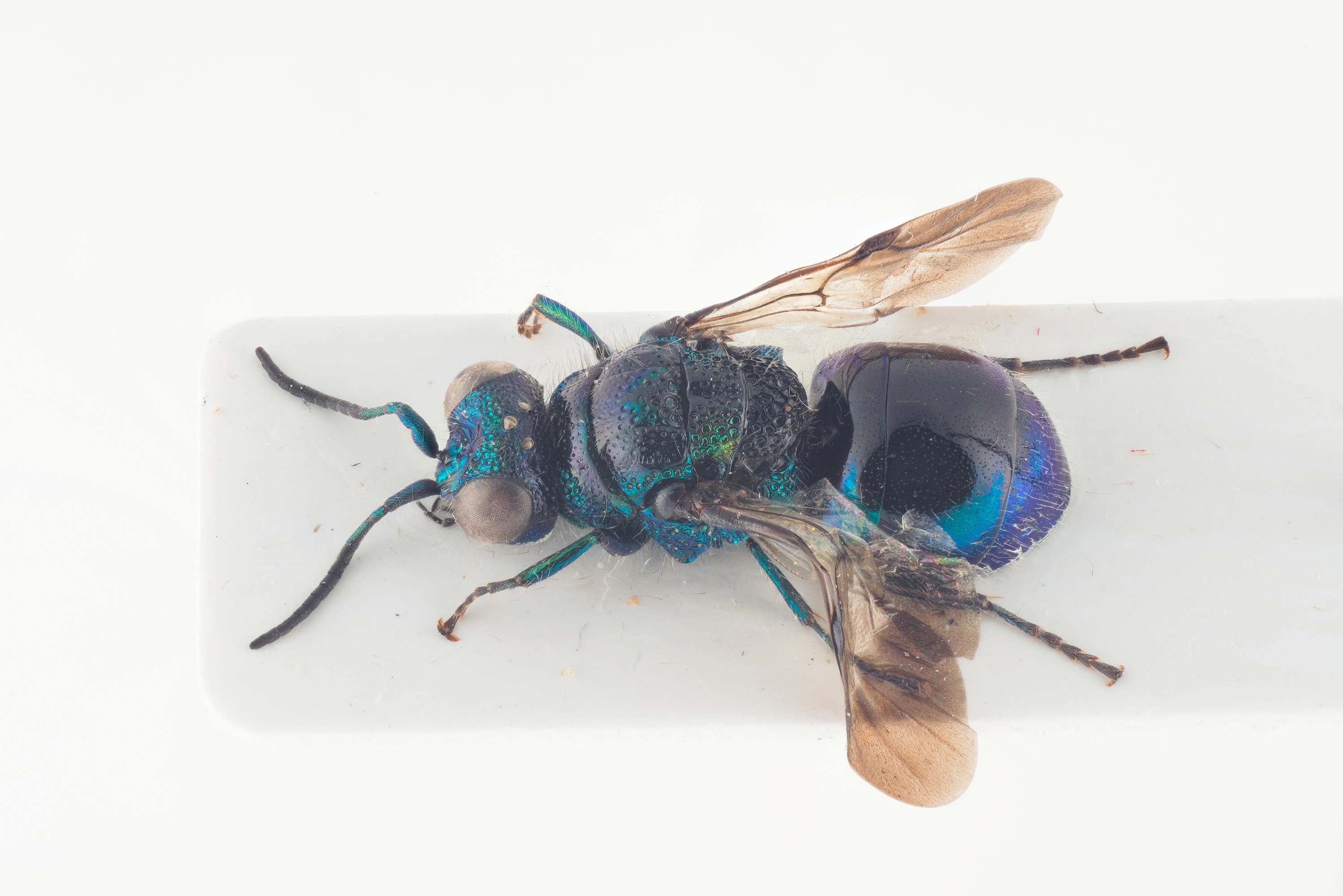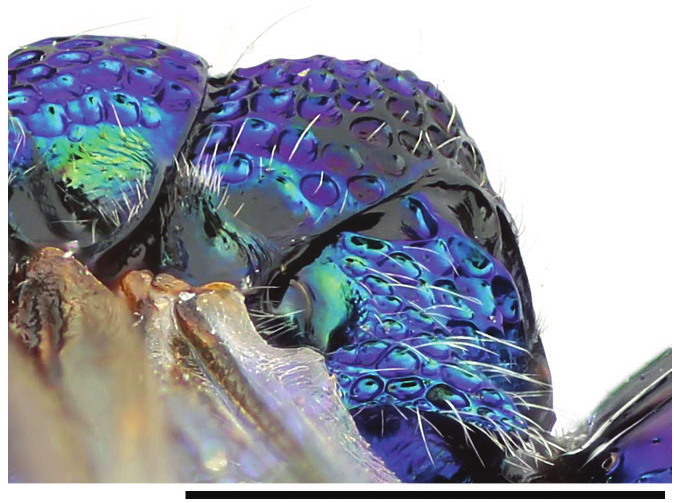Pseudomalus violaceus
A relatively rare species often recorded in sandy areas along the coast. A large and completely violet-blue species, which is a cleptoparasite of Crabronidae in the genus Pemphredon.
- Innhold
- Diagnosis
- Distribution
- Biology
Diagnosis
Figure 30
Mesoscutellum, metanotum and propodeum, lateral view: P. violaceus ♀. Scale 1 mm.
Length 5–8 mm.
The species differs from other species of the genus by its completely violet-blue (female) or black-green to black-blue (male) body, and a wide and shallow apical notch on T3. The scapal basin is also higher and dorsally deeply angled. Exceptionally small and worn specimens can be confused with Omalus puncticollis (or O. aeneus), but the mesopleuron of P. violaceus always strongly projects ventrally (as in Fig. 28) and the mesoscutum has large punctures, which are clumped postero-medially (as in Fig. 27).
Distribution
Denmark, Estonia, Finland, Latvia, Lithuania, Norway, Sweden. Relatively rare.
Trans-Palearctic (?). Europe, Middle East, Siberia, Manchuria (Linsenmaier 1997). Eastern records could be related to P. bergi Semenov, 1932 (Rosa et al. 2014) or other similar central Asiatic species, e.g. P. bogojavlenskii Semenov, 1932 or P. saturatus Semenov, 1932.
Be aware that the records present in the GBIF map may be misleading for some countries due to unrevised data sets or missing information.
GBIF Taxon: Pseudomalus violaceus (Scopoli, 1763)Biology
Habitat: forest margins and clearings. Often found on leaves of sunexposed deciduous trees and bushes.
Flight period: June to August. Adults are attracted to honeydew of aphids (Gauss 1987).
Host: Pemphredon lugubris (Fabricius), more rarely also Passaloecus corniger Shuckard and P. eremita Kohl (Crabronidae) (Nielsen 1900, Morgan 1984, Gathmann and Tscharntke 1999, our own obs.). Host records of other species (e.g. Trypoxylon Latreille) are doubtful, because of their deviant biology compared to other hosts. In Finland, the species has been reared from an old gall of Saperda populnea (Linnaeus) (Cerambycidae) on a Populus branch (M. Pentinsaari pers. obs.) and a rotten Alnus stump containing host nests.

